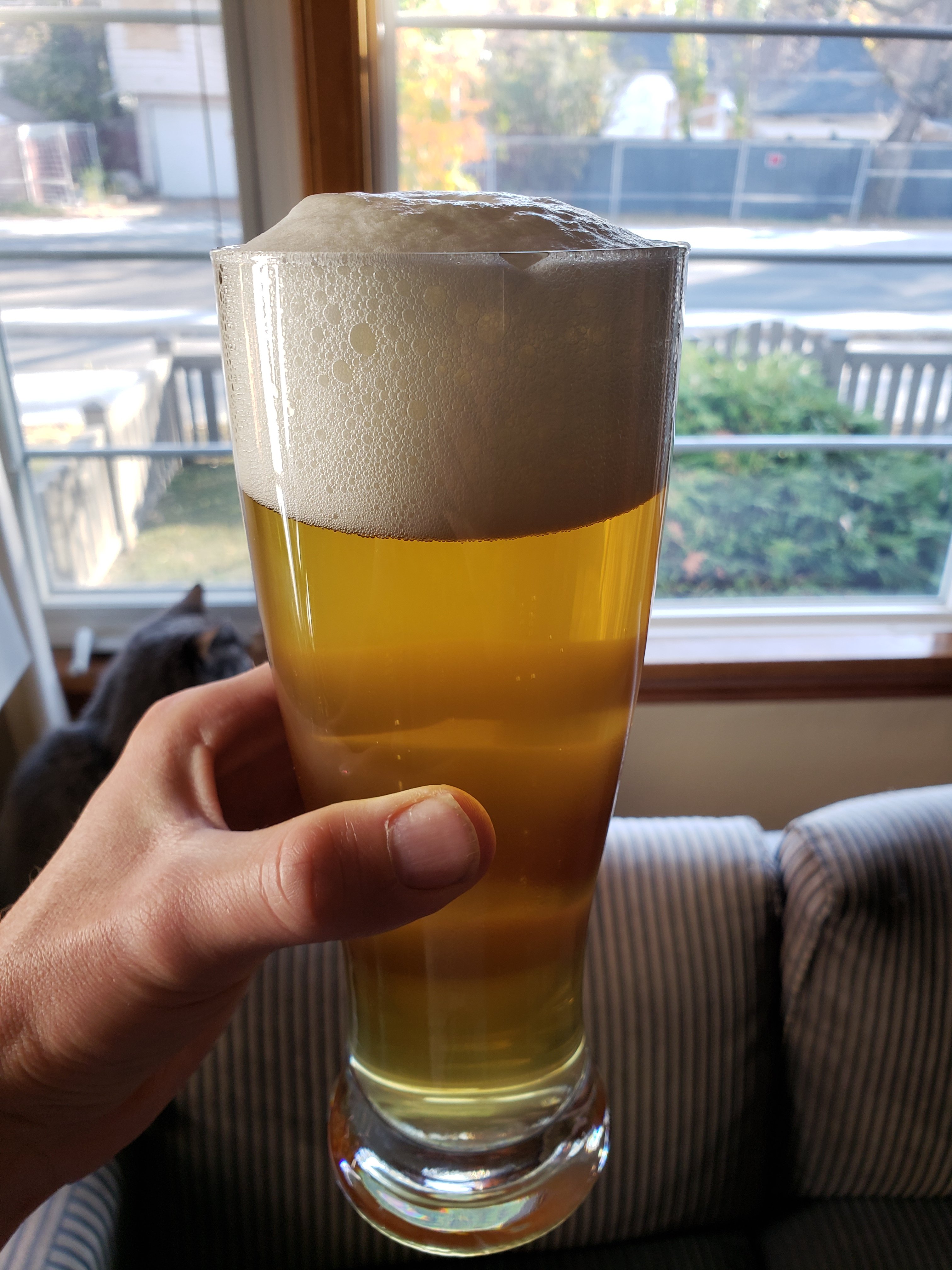couchsending
Well-Known Member
- Joined
- Jun 21, 2016
- Messages
- 3,063
- Reaction score
- 2,256
I wanted to put in my 2 cents on the Koln yeast. I was unaware that this needed a higher than normal pitch rate until after the yeast was pitched. According to Lallemand 2 yeast packs should be used. I used 1 pack in 5.5 gallons 1.049 og wort. The fermenter was chilled to 59f. This is the slowest yeast I've ever used. It took right over 36 hours just to see VERY minimal activity and 60 hours for a slight krausen. It may be due to the pitch rate, but, it may just be the yeast itself. This is a very simple brew. 90% 2 row 10% wheat malt, FWH Magnum, 15 min Hallertau MF, bittered to around 20 ibus. The pilsner water profile is being used from brewers friend. Once this brew is ready I'm going to take it to the lhbs/brewery and see what liquid strain they think this is close to. I wanted something light and plain jane to get a fill for the yeast before I really developed a rock solid recipe.
This yeast is definitely not worth using. As someone who brews Kolsch a lot (close to 20 batches the last few years) and has used every yeast under the sun I wouldn't bother with this yeast again. The cell counts are incredibly low and especially if you’re trying to ferment it on the cold side I’d probably shoot for 3 packs. That’s way too expensive when the benefit of dried yeast is often the cost.
The likelihood that a slow fermentation like you’re experiencing is going to produce anything that you could compare to other yeasts is highly unlikely. Usually you will experience increased acetaldehyde production and subsequent poor cleanup of it and other compounds. You might get lucky but if not I’d try krausening it with your next batch. It’s amazing what it can do.
I’m pretty sure Lallemand Koln is just their version of K-97 which is essentially the dried version of wyeast 1007, German Ale. Although the flocculation does look to be a bit better with Koln. They do say it’s a slow fermenter and can take a while for fermentation to begin. I’d bet it’s just due to the fact that this yeast doesn’t dry well at all. The fact that they talk about hop biotransformation with this yeast and it ferments cold to me sounds exactly like 1007.
wlp029 and Imperial Dieter are the easiest Kolsch strains to use as they are relatively fast, ferment better a little warmer, and flocculate much faster. However they just don’t seem to produce the correct ester profile for me. 2565 is hard to beat from an ester standpoint but it takes so unbelievably long to flocc. When it does it’s great though.
1007 lends a bit more sulphur character and is a bit easier to use than 2565 but not by much. It’s a pretty hardy yeast and doesn’t produce diacetyl above threshold so you can crash it as soon as it hits terminal. It’s used by a decent amount of large craft breweries for this reason, but again needs to be filtered or fined for a quick turnaround.
























































![Craft A Brew - Safale S-04 Dry Yeast - Fermentis - English Ale Dry Yeast - For English and American Ales and Hard Apple Ciders - Ingredients for Home Brewing - Beer Making Supplies - [1 Pack]](https://m.media-amazon.com/images/I/41fVGNh6JfL._SL500_.jpg)


